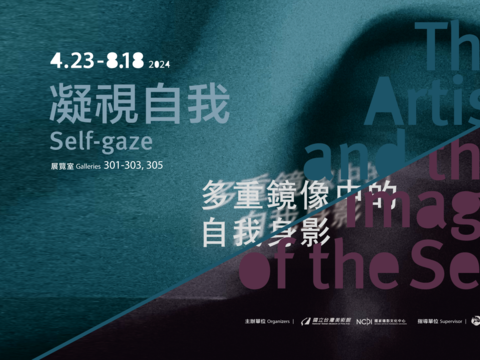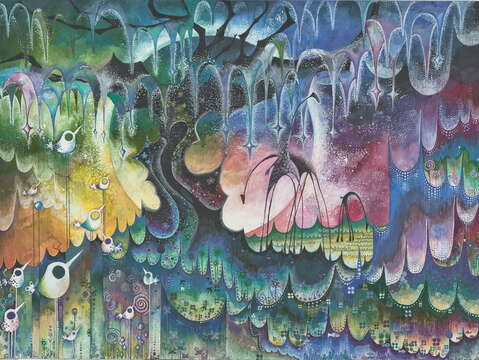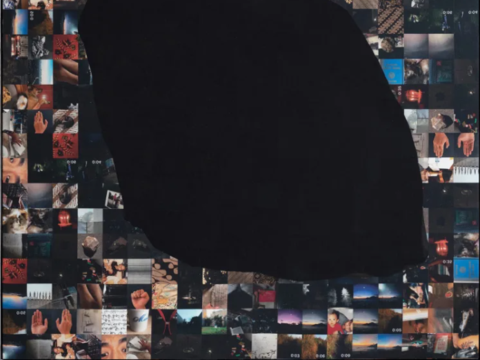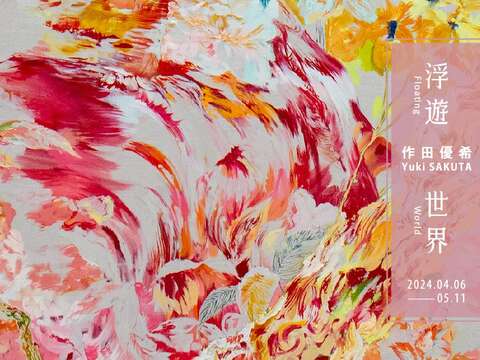Post date:2024-04-10
Updates:2024-04-10
118
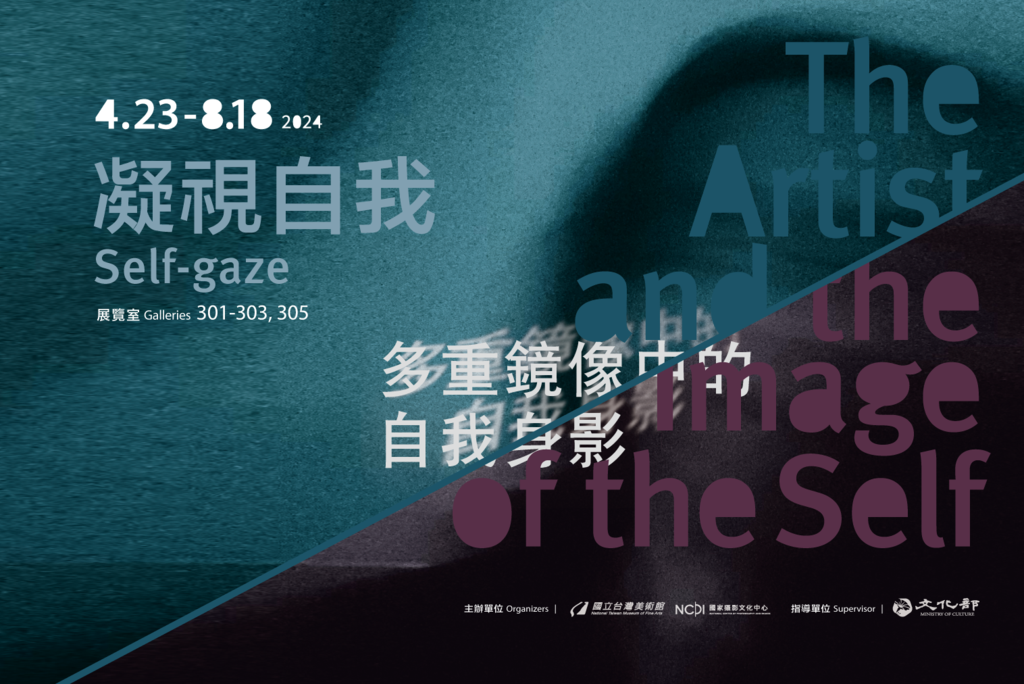
- Event Time
- 2024-04-23~2024-08-18
- Event Location
- NO.70, SECTION 1, ZHONGXIAO W. ROAD,, Zhongzheng Dist., Taipei City Taiwan, R.O.C
The self-image of an artist in the mirror is the projection of the person’s image and symbol of identity, including visual elements such as appearance, expression, posture, and physical characteristics, carrying multiple contexts of personal consciousness and cultural background. The meanings of these "looking-glass self" are closely related to the gaze of the self, the image of self-consciousness, and the imaginary of self-image.
How to understand the self-image in the mirror? From the techniques of the artist’s expression, gazing at oneself is not just about a fixed act of looking or being looked at. The self-image is not merely a latent image resulting from physical exposure, but rather approaches an image memory and visual encoding under a state of disclosure. In this way, as a message conveying the zeitgeist, the self-image serves as a reveal of multiple reflections. Through the exhibition "The Artist and the Image of the Self", we see the self-images of photographers from the Japanese colonial era and photographers in post-war Taiwan, and self-images of Taiwanese artists after the lifting of martial law, as well as the diverse forms of self-representation by contemporary artists through new media technologies in recent years. This exhibition demonstrates abundant artistic energy.
In this context, Taiwan's historical environment has nurtured a significant development trajectory of imagery, which meaningfully involves the succession and alternation of self-images in both technology and concepts. Through the implications of represented self-images, understanding and connections are generated in the metaphors formulated during the manufacture of the artworks, reigniting dialogues of self-awareness and social inquiry. Furthermore, by employing the visible structures of these self-images, linked to the consciousness of issues and reflexive attitudes arising from personal thoughts and social phenomena, a visualized reading axis is constructed. Thus, between gazing at oneself and reflecting on others, there exists a mutually constitutive connection, providing different perspectives to elucidate individual life experiences and social collective memories as testimony to the times.
In this sense, the manifest significance of the artist's self-image is like a thin mirror reflecting oneself, pouring out the psychological space of self-awareness and the deep-rooted relationships of social circumstances. From the angle of "gazing at oneself," the collision between self-images and image production has sparked a profound creative insight for artists and reflected the dimensions of current reality and the environment they inhabit. That is to say, the engraving of the self-image in the artwork generates subjective self-awareness between gaze and cognition, whether it's the anticipated, alienated, or imagined projection. Ultimately, through the transformation of image media and through the properties of image representation, the mirrored self is endowed with deeper existential value.
On the other hand, contemporary artists, influenced by the transference effect of self-reflection, shift from internally contemplating image concepts to focusing on external objects, indirectly projecting their thoughts upon self-identity and self-reflexive thinking. This extends to the corresponding relationship between the body and the environment. They revisit personal introspection and insights into their own culture, engaging in dialogue through bodily actions and social spaces, further integrating self-images into the realm of contemporary bodily cultural phenomena. From the perspective of "reflexive manifestation," these composite textual forms of mirrored relationships have already diffused the solid anchor points of self-images, embedding them into the expressive systems of the times, injecting the possibility of more image translations.
Overall, "The Artist and the Image of the Self" explores the various manifestations of self-image in mirrors and the translational thinking behind self-images. Starting from the artist’s identity, it connects to the ideologies among self, others, and alterity, questioning the subject-object relationship in contemporary image production. More importantly, the representation of the artist's self-image elaborates the polysemy of images, and also implies reflexive references to social others. These self-images under the trends of the times timely interweave with the tracks of society, culture, and history, highlighting an irreplaceable existence and the core value of the artistic perspective.
How to understand the self-image in the mirror? From the techniques of the artist’s expression, gazing at oneself is not just about a fixed act of looking or being looked at. The self-image is not merely a latent image resulting from physical exposure, but rather approaches an image memory and visual encoding under a state of disclosure. In this way, as a message conveying the zeitgeist, the self-image serves as a reveal of multiple reflections. Through the exhibition "The Artist and the Image of the Self", we see the self-images of photographers from the Japanese colonial era and photographers in post-war Taiwan, and self-images of Taiwanese artists after the lifting of martial law, as well as the diverse forms of self-representation by contemporary artists through new media technologies in recent years. This exhibition demonstrates abundant artistic energy.
In this context, Taiwan's historical environment has nurtured a significant development trajectory of imagery, which meaningfully involves the succession and alternation of self-images in both technology and concepts. Through the implications of represented self-images, understanding and connections are generated in the metaphors formulated during the manufacture of the artworks, reigniting dialogues of self-awareness and social inquiry. Furthermore, by employing the visible structures of these self-images, linked to the consciousness of issues and reflexive attitudes arising from personal thoughts and social phenomena, a visualized reading axis is constructed. Thus, between gazing at oneself and reflecting on others, there exists a mutually constitutive connection, providing different perspectives to elucidate individual life experiences and social collective memories as testimony to the times.
In this sense, the manifest significance of the artist's self-image is like a thin mirror reflecting oneself, pouring out the psychological space of self-awareness and the deep-rooted relationships of social circumstances. From the angle of "gazing at oneself," the collision between self-images and image production has sparked a profound creative insight for artists and reflected the dimensions of current reality and the environment they inhabit. That is to say, the engraving of the self-image in the artwork generates subjective self-awareness between gaze and cognition, whether it's the anticipated, alienated, or imagined projection. Ultimately, through the transformation of image media and through the properties of image representation, the mirrored self is endowed with deeper existential value.
On the other hand, contemporary artists, influenced by the transference effect of self-reflection, shift from internally contemplating image concepts to focusing on external objects, indirectly projecting their thoughts upon self-identity and self-reflexive thinking. This extends to the corresponding relationship between the body and the environment. They revisit personal introspection and insights into their own culture, engaging in dialogue through bodily actions and social spaces, further integrating self-images into the realm of contemporary bodily cultural phenomena. From the perspective of "reflexive manifestation," these composite textual forms of mirrored relationships have already diffused the solid anchor points of self-images, embedding them into the expressive systems of the times, injecting the possibility of more image translations.
Overall, "The Artist and the Image of the Self" explores the various manifestations of self-image in mirrors and the translational thinking behind self-images. Starting from the artist’s identity, it connects to the ideologies among self, others, and alterity, questioning the subject-object relationship in contemporary image production. More importantly, the representation of the artist's self-image elaborates the polysemy of images, and also implies reflexive references to social others. These self-images under the trends of the times timely interweave with the tracks of society, culture, and history, highlighting an irreplaceable existence and the core value of the artistic perspective.
 Self Gaze: The Artist and the Image of the Self
Self Gaze: The Artist and the Image of the Self